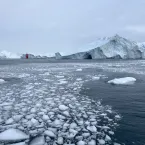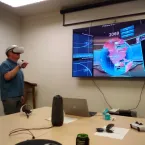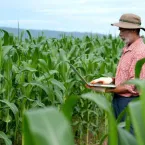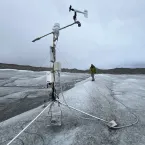Our Research
As climate changes, how do Earth's frozen areas affect our planet and impact society?
In this section
Related News & Stories
Filter by:

News Release
Arctic sea ice has likely reached its minimum extent for the year, at 4.60 million square kilometers (1.78 million square miles) on September 10, 2025, according to scientis

Analysis - Sea Ice Today
In August, sea ice rapidly melted and compacted north of Alaska in the Beaufort Sea, initiated by a warm pulse of air from east Siberia that was sustained by persistent winds from the southwest. However, the overall pace of decline for the month was near average. Antarctic sea ice climbed in August but remained well below average, ending at third lowest extent.

Spotlight
In Boulder, scientists and first-time gamers explore an immersive new way to see climate data.

Spotlight
Beyond snow and ice data, the NASA NSIDC Distributed Active Archive Center (DAAC) archives and distributes soil moisture data sets that directly support American agriculture.

Spotlight
A statement from the National Snow and Ice Data Center and the Cooperative Institute for Research in Environmental Sciences, University of Colorado Boulder

Analysis - Ice Sheets Today
A strong and persistent melt event occurred in southern Greenland in mid-August 2025, preceded by extensive rain in the same area. Snow cover following the rain events covered the lower elevation bare ice areas along the western side, brightening the surface again.